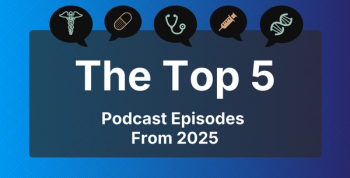
Risk of T2D From Corticosteroid Exposure Associated With Age, Sex, BMI, Steroid Dose
A recent study characterized the known association between corticosteroid exposure and type 2 diabetes (T2D), finding risk to be associated with treatment- and patient-related characteristics that can inform prescription of treatment with steroids.
Increased risk of incident type 2 diabetes (T2D) from corticosteroid exposure is associated with treatment- and patient-related characteristics including steroid dose and duration, body mass index (BMI), age, and sex, according to a study
Though it is generally accepted that corticosteroids can induce T2D, this study is one of the first to characterize the association, the authors noted.
“Therapeutic exposure to corticosteroids is very common and for a wide range of clinical indications,” they wrote. “Therefore, unnecessary exposure to a drug regimen that further increases the risk of a serious disease such as type 2 diabetes is clearly a concern.”
To characterize the association between prescribed oral and injected, systemic corticosteroids and the risk of T2D, researchers conducted a retrospective, observational cohort study using data from UK primary care. Patients selected for the study had at least 1 episode of exposure to oral or intravenous corticosteroids for any indication.
Risks of incident T2D were estimated for patients exposed to corticosteroids and matched, non-exposed patients. The study included 536,852 patients exposed to corticosteroids and 536,852 matched patients, with a median follow-up of 101 days and 99 days, respectively.
The rate of incidence of T2D was 12.5 events per 1000 person-years’ exposure for those who received at least 1 dose of corticosteroids. The rate in patients never exposed to corticosteroids was 6.7 events per 1000 person-years’ exposure. The relative rate in patients exposed to corticosteroids was 1.85 (95% CI 1.74-1.97).
The results indicated that T2DM was associated with several of the selected characteristics.
Crude rates of incident T2D were found to increase with age. Rates were highest among those 75 years and older for both patient groups.
Similar to age, rate of incident T2D increased with increasing levels of obesity. Patients exposed to corticosteroids in the very severely obese category experienced 47.1 events per 1000 patient-years’ exposure, compared with 4.9 events for those with a normal BMI at baseline.
A gender difference was observed in the crude rate of T2DM for the patients exposed to corticosteroids. Women had an event rate of 11.1 per 1000 patient-years’ exposure compared with 14.4 for men, with a rate ratio of 1.29 (95% CI 1.20-1.40).
The researchers also noted differences between steroid dose and rate of incident T2D. The patients in the medium-dose group experienced the highest number of events per 1000 patient-years’ exposure compared with the low- and high-dose groups.
Additionally, duration of corticosteroid exposure was found to be associated with incident diabetes. Patients exposed for > 6 months experienced 16.9 events per 1000 patient-years’ exposure compared with 8.9 events for those exposed for < 2 weeks.
Overall, the highest rate of incident T2DM, 190 events per thousand patient-years’ exposure, was observed in very severely obese men aged 46-55 years having had the highest systemic corticosteroid dose.
A more complex pattern of association emerged through an analysis of incident diabetes by BMI and steroid dose. The authors suggest this is “possibly driven by reverse causality in that duration of exposure would be dictated by steroid withdrawal in incident cases.”
While the inability to account for reverse causality is considered a limitation of this study, the authors assert that it should not materially affect the overall conclusions in relation to these patterns of association.
The results of the study demonstrated that the characteristics of age, sex, level of obesity, and use and duration of corticosteroids are important for determining patient risk of incident T2D, though likelihood was highly variable for multiple characteristics in combination. The authors suggest that both doctors and future studies should consider and account for these characteristics.
“Physicians owe it to their patients to carefully consider dose and duration of steroid prescribing and to be alert to their many adverse effects of this class of drugs,” concluded the authors.
Reference
Ambery P, Eryd SA, Jenkins-Jones S, et al. The absolute risk of incident type 2 diabetes following exposure to systemic corticosteroids in selected steroid-related and phenotypic groups. Diabetes, Obesity, and Metabolism. Published online July 6, 2022. doi:10.1111/dom.14808
Newsletter
Stay ahead of policy, cost, and value—subscribe to AJMC for expert insights at the intersection of clinical care and health economics.








































